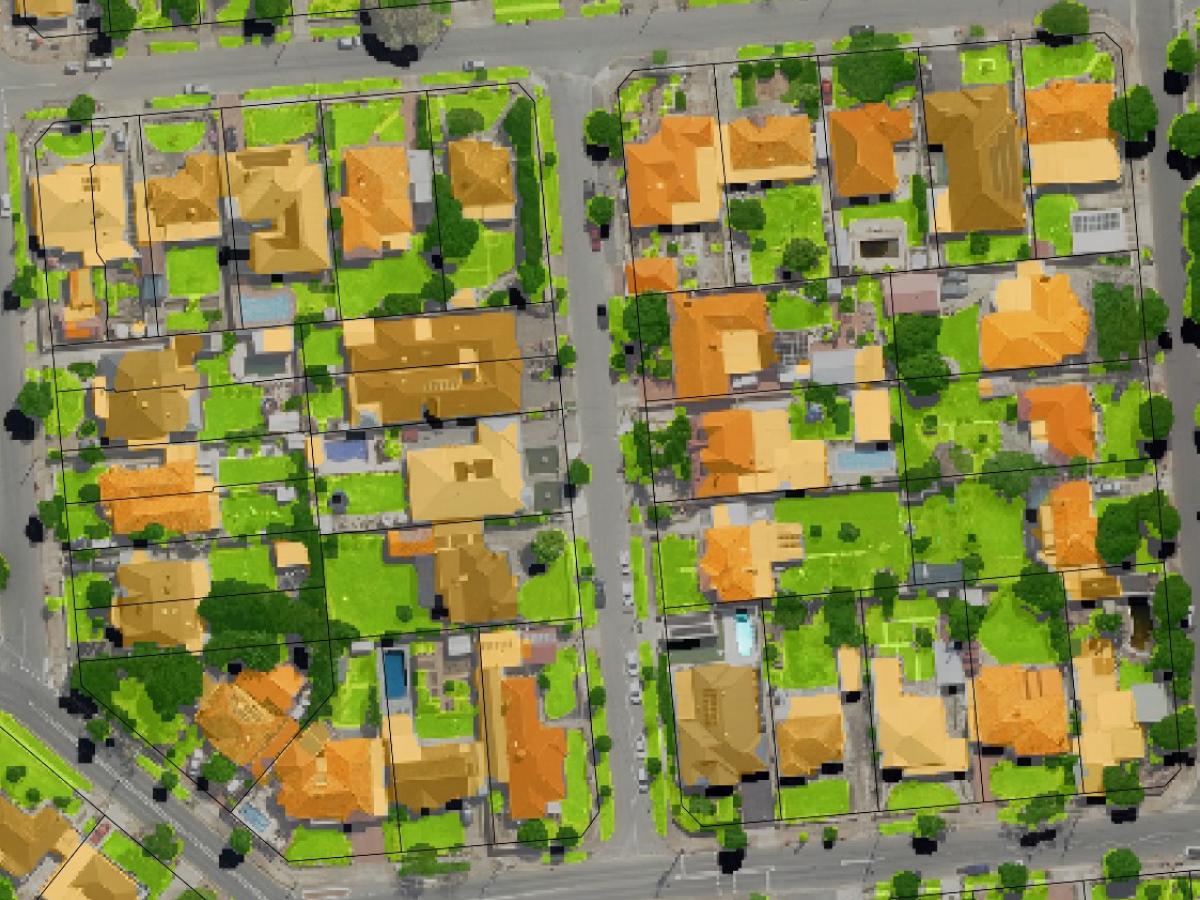Harnessing rainwater for self-sufficient veggie gardens

An aerial view of an Adelaide suburb highlighting different urban land uses. Credit: Data provided by Aerometrex, Mapland and the Department for Infrastructure and Transport.
With the rising cost of living and vegetables becoming more expensive, University of Adelaide research has found that 65 per cent of Adelaide homes can grow enough vegetables to become self-sufficient by using their own rainwater.
However, the cost of installing rainwater tanks to sustain the veggie patch doesn’t pay for itself over a 25-year life span.
Almost 500,000 homes across 17 Greater Adelaide council regions were included in the extensive study, which used high resolution spectral and Light Detection and Ranging (LiDAR) imagery to capture an aerial view of the city.
“Urban agriculture is becoming more and more important due to climate change, food insecurity and economic instability, so we wanted to study how feasible this would be in a city like Adelaide,” said PhD student Isobel Hume, from the University of Adelaide’s School of Agriculture, Food and Wine, who was the first author of the study.
“The fact that 65 per cent of residential properties have enough available land to grow enough vegetables to be self-sustainable while using only rainwater provides councils, governments and policy makers with an important insight.
“Hopefully it will also encourage people to grow their own vegetables, create more edible gardens and make use of their backyards.”
The study – published in Sustainable Cities and Society – builds on previous research that found households would need to give up less than a quarter of their domestic lawn areas to grow enough vegetables to become self-sufficient.
The latest study examines a much larger number of homes, while also incorporating the viability of harvesting rainwater instead of using mains water.
“This would require a storage tank of 40kl volume, which has an approximate footprint of 15 square metres,” Ms Hume said.
“A more reasonable alternative for most people could be to grow two and a half serves of vegetables per day per person per household, which would require a 15kl storage tank and seven square metres.
“The biggest issue we found is that none of the rainwater tanks yielded an economic return on investment when compared to irrigating with mains water. This might not put off people on medium to high incomes who see the environmental benefits of repurposing rainwater.”
“Urban agriculture is becoming more and more important due to climate change, food insecurity and economic instability"Isobel Hume
The economic modelling doesn’t consider potential savings when people grow their own food, which is an area of future research. Water prices are also projected to increase, improving the relative value of having a rainwater tank.
“Properties that can achieve self-sufficiency have an average year of construction in 1977, while those that cannot achieve self-sufficiency have an average year of construction in 1997,” said Professor Tim Cavagnaro, Associate Dean Research Partnerships at the School of Agriculture, Food and Wine at the University of Adelaide.
“Houses built more recently are likely to have less lawn space and a higher proportion of the block dedicated to the building. Houses built before 1950 were excluded as we didn’t want to include houses that may have been more likely to have had extensions.”
The study’s findings coincide with Urban Agriculture Month from 1-30 November, which aims to raise awareness of Australia’s urban agricultural movement. For more information, visit https://urbanagriculturemonth.org.au
Media contacts
Isobel Hume, PhD student, School of Agriculture, Food and Wine, the University of Adelaide. Phone: +61 (0)439 350 835. Email: isobel.hume@adelaide.edu.au
Lee Gaskin, Media Coordinator, University of Adelaide. Phone: +61 (0)415 747 075. Email: lee.gaskin@adelaide.edu.au
